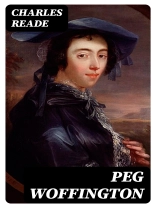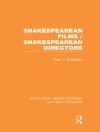In ‘Peg Woffington, ‘ Charles Reade masterfully weaves a vibrant narrative set against the backdrop of 19th-century London theatre. The novel revolves around the titular character, a spirited and talented actress, and explores themes of love, betrayal, and the complexities of social status. Reade’s rich and evocative prose brings to life the bustling world of the stage, deftly intermingling humor and pathos while drawing on his extensive knowledge of theatrical life. The book is notable for its realistic characterizations and its commentary on the societal norms of the Victorian era, which adds depth to the story and provides insight into the cultural landscape of the time. Charles Reade (1814-1884) was not only a prolific novelist but also a notable playwright and a passionate advocate for social reform. His experiences in the theatre and his keen observations of the injustices present in society profoundly shaped his writing. This unique background is reflected in ‘Peg Woffington, ‘ where the struggles of its characters illuminate the wider issues of gender, class, and morality that Reade sought to address throughout his literary career. Recommended for both literary enthusiasts and casual readers, ‘Peg Woffington’ offers a captivating glimpse into the human condition through its intricate narrative and engaging characters. Reade’s deft storytelling and keen social commentary render this work a valuable addition to any literary collection, making it a must-read for those interested in the intersection of art and society.
เกี่ยวกับผู้แต่ง
Charles Reade (1814-1884) was a notable Victorian author and dramatist, remembered for his contribution to the development of the English novel and for his detailed observations of contemporary society. Often combining his literary talents with an academic background and a didactic purpose, Reade’s work typically aimed to bring to light various social injustices, using fiction as a means to inspire reform. His writing style is characterized by a combination of realistic narrative with elements of melodrama, a choice which sometimes brought him both critical acclaim and disapproval (Sutherland, 1976).
One of Reade’s most popular works is ‘Peg Woffington’ (1853), a novel that depicts the life and times of the eponymous 18th-century actress. Renowned for its vivid characterizations and its rich portrayal of the Georgian theatrical milieu, the book is an example of Reade’s fascination with historical accuracy and his ability to create engaging and lively historical novels, a genre that occupied much of his writing career (Sloan, 2002). ‘Peg Woffington’, alongside Reade’s other significant works like ‘The Cloister and the Hearth’ (1861) and ‘Hard Cash’ (1863), continues to be studied for its representation of Victorian concerns and the complexity of its Victorian-era characters (Sutherland, 1976).












